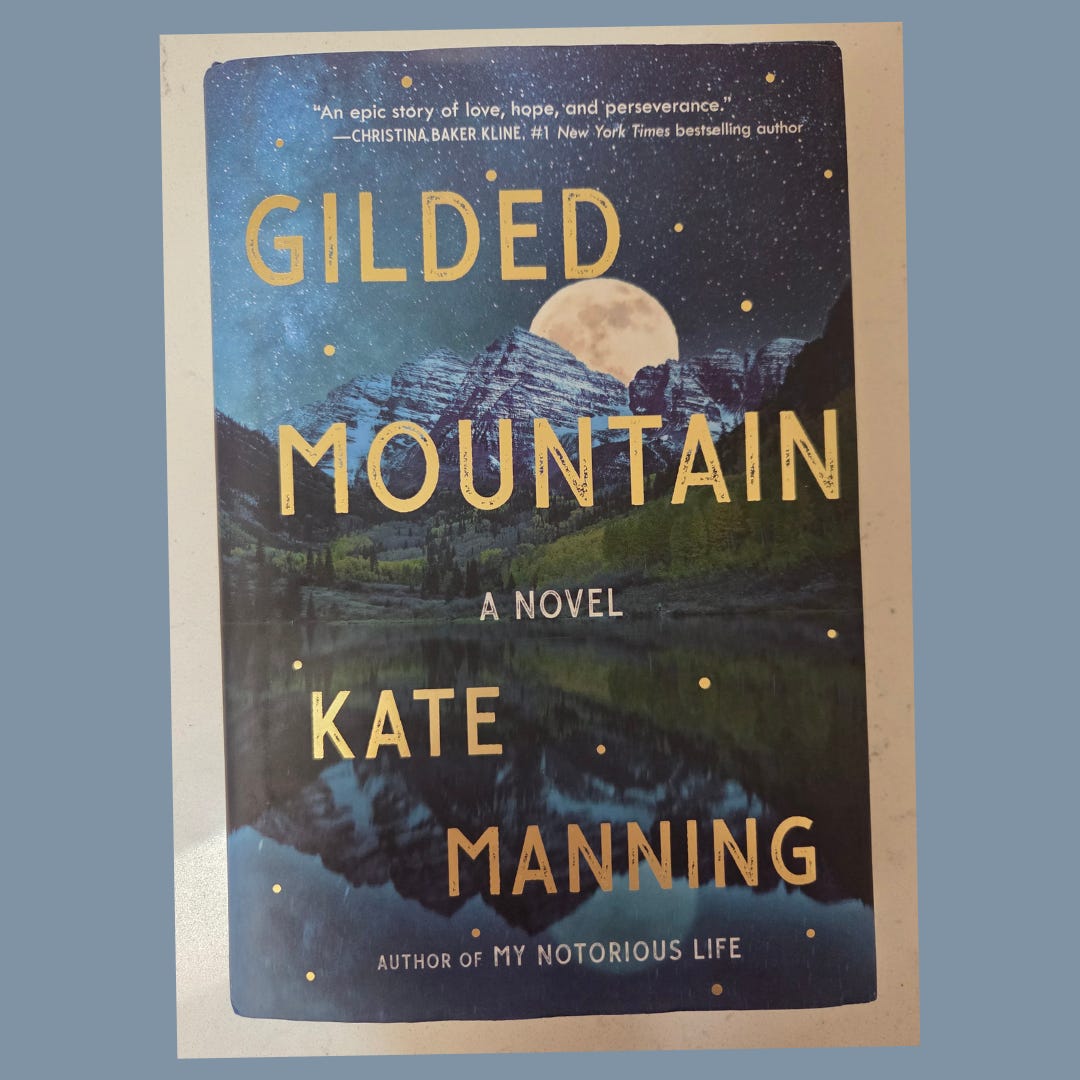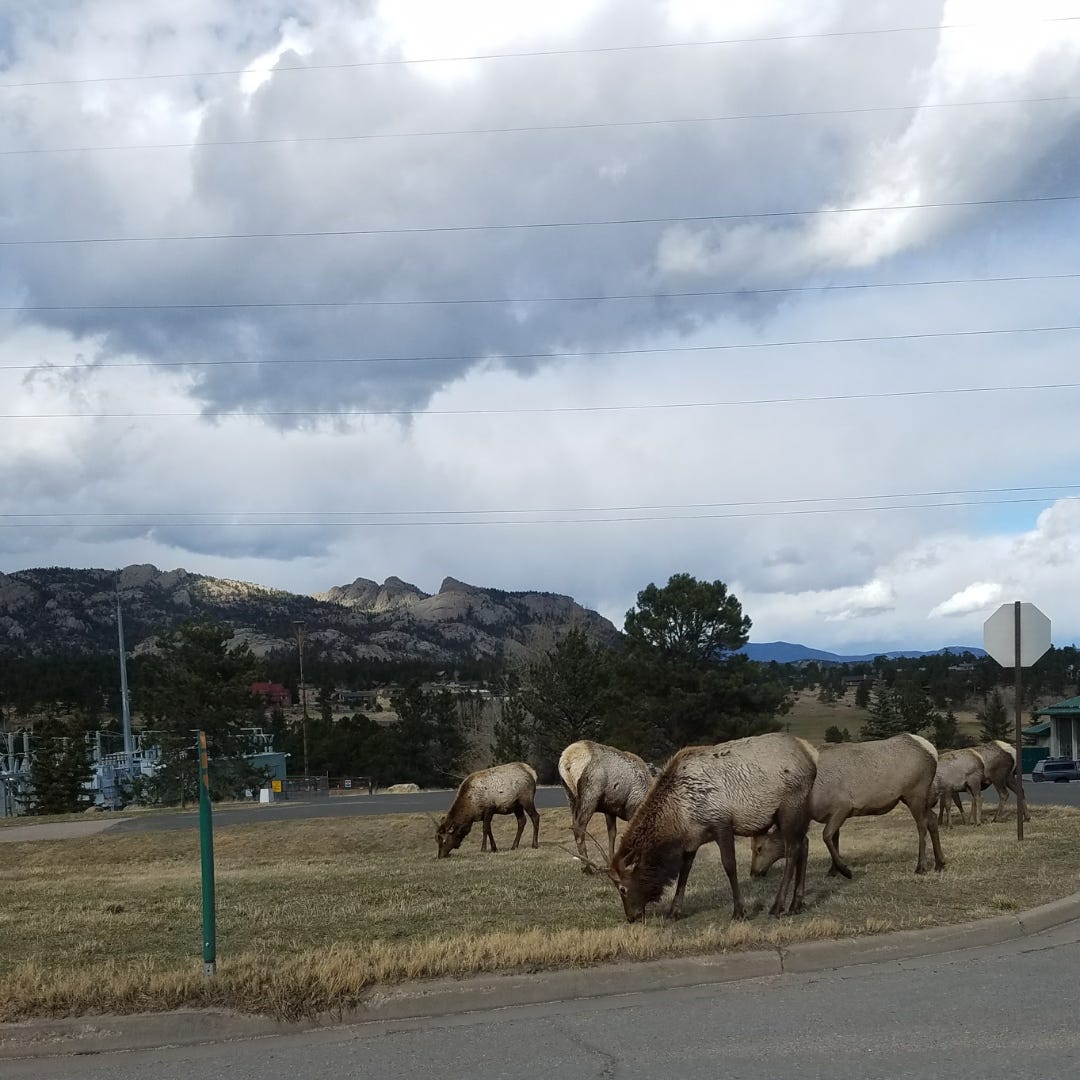You Should Read GILDED MOUNTAIN by Kate Manning
And not just because I share a first name with the author!
Check out a You Should Read author interview with Diane Botnick after my review! Click on “Read in app” to read the full post.
Last month, while waiting at a bus stop in Windermere, my husband and I studied a route map and debated whether we should wait for the bus, which was obviously behind schedule, or walk to the train station instead. The weather was lovely, and the walk was only a mile. But we had four suitcases and two kids to consider, and at the end of our two-week journey, I wasn’t sure I could convince our daughters to make the trek.
Correction/confession: I wasn’t sure I could listen to them complain about walking, uphill or down, for one more day.1
A couple waiting near us overheard our conversation and, noticing our American accents, asked how we were enjoying our travels. The husband told us he loves the American west and that his wife loves “everything American.” She confirmed this and was delighted to find out we were from Colorado because she was reading a book set in our state.
The exchange reminded me of the way travel reframes your perception of yourself and your home. Me, have an accent? I wanted to say. No, no, you must be thinking of my relatives in Minnesota. And Colorado, the American west? According to the map, sure, but that’s not something I think about often.
Historical fiction, like travel, pulls the same trick. Gilded Mountain by Kate Manning introduced me to an area and period of Colorado history that was completely new to me.
At the turn of the twentieth century, Marble, Colorado was nationally known for its marble quarries. According to History Colorado, stone from Marble “was used in hundreds of landmark buildings, structures and monuments throughout the nation, including the Lincoln Memorial, the Tomb of the Unknown Soldier, and the Washington Monument.” Sylvia Smith angered local business owners with her articles in the local paper, The Marble Booster, that decried their unfair practices.2
Inspired by Smith and the events in Marble, Manning’s Gilded Mountain tells the story of Sylvie Pelletier, a young woman who finds herself in Moonstone, Colorado, when her father takes a job in the quarry mill. The novel is told from her point-of-view as told from the end of her life. Because of the gap in time from when events occurred to when Sylvie is relating them, her narrative voice adds tantalizing hints about the drama about to unfold. The novel opens with these delicious lines:
“I never told a soul about the money. Not a word about the marriage or the events that led me to his arms” (3).
More, please!

Before we learn about the money or the marriage, though, we follow Sylvie as she makes her way in Moonstone. Although born in the US, Sylvie is culturally Quebecois, and speaking French makes her an outsider twice over when she arrives in Moonstone in 1907, two years after her father arrives “as a quarryman for the Padgett Fuel and Stone Company, digging out the world’s finest grade of pure white marble, good for carving into statues and bank pillars, monuments” (4). Sylvie and her family struggle through a harsh winter in the sparse one-room house provided by Padgett. Instead of being paid in money, the quarry workers earn credit to “spend” at the company store. Saving money or getting ahead is as impossible as staying warm. When Sylvie wins an essay contest and lands a job at The Moonstone City Record, she is excited not only to help her family, but also to gain her independence from her conversative mother.
K.T. Redmond, the newspaper’s owner, provides a fiery role model. She styles her newspaper as “Liked by Many, Cussed by Some, Read by Everybody” (39). Under K.T.’s unorthodox tutelage, Sylvie begins reporting on injuries at the quarry. Despite the appeal of being a newspaperwoman, the prospect of five dollars a week lures her away to work at the Padgett family’s Moonstone mansion, known as Elkhorne Manor. Working as Inge Padgett’s personal secretary introduces Sylvie to an entirely new way of living.
The Padgetts’ enormous house and lavish lifestyle mock the inhumane living conditions of the workers and their families in Quarrytown. The presence of John and Easter Grady, a formerly enslaved couple who work at Elkhorne, also complicate Sylvie’s worldview. While on the surface they appear to be employees like her, she learns their history within the Padgett family is much darker and imbalanced than she imagined.
When Inge heads back east, Sylvie returns to Moonstone Record and continues to write about Quarrytown hardships. The more she learns about the labor union movement3, led by the charismatic George Lonahan, the more she questions her relationship to the Padgetts, including her inescapable interest in Jasper Padgett, the charming heir.
Interspersed with Sylvie’s narrative are articles from Moonstone Record as well as its Padgett-funded competitor. In her Author’s Note, Manning explains she “appropriated some newspaper articles, events, and certain biographical details” throughout the novel but altered them to fit her narrative. Letters swapped between characters also add a “real-life” flair to this fictional tale. Sylvie’s story did not end where I expected, and I eagerly read along to follow her journey and to envision a Colorado that felt as foreign to me as Colorado might have felt to my companion at the bus stop.
Back home, as I write this post, I could kick myself for not asking the woman from Liverpool which book she was reading set in Colorado. Maybe it was Gilded Mountain. I hope this book finds its way to her—and to you—some day.
I spent last week at the AP Summer Institute in Erie, CO. The professional development was fantastic. Our generous instructor, Michelle Iskra, shared a course’s worth of resources. All of my fellow teachers there for AP Lit also shared goodies, but perhaps the best surprise was digging through my own trove of resources and rediscovering some excellent material I’d completely forgotten.
In honor of not having to reinvent the wheel, here’s my take on poetry instruction. If you read my gushing about Stephanie Burt’s Don’t Read Poetry in last month’s Exit Ticket, you know how much I love an inclusive, accessible approach to poetry. Turns out, I created my own version of this a long time ago and called it Poetry Rounds.
The idea is to read a poem in multiple rounds, focusing on a new aspect in each round. First, consider what you see and hear in the poem. Then, examine what its language is doing. This will help you to identify the emotions of the poem. Putting the literary elements (look, sound, do) and the tone (feel) together will lead you to the author’s theme (say).
Breaking any poem down this way offers readers many opportunities to enter it. Some readers pick up on sounds right away, while others get too hung up on looking for rhyme to think about figurative language. This approach doesn’t privilege one entryway over another; all the roads lead to reading poetry, which is the ultimate goal. Make a FREE copy of my Poetry Rounds student handout here (2 pages).
Finally, I’m excited to share a book recommendation with you from my friend Diane! I met Diane during a workshop at Lighthouse Writers with Claire Messud (read more about that here), and I’m thrilled that she’s publishing her debut novel, Becoming Sarah, this fall, available for pre-order now!4 She supports Bookshop.org and thinks you should read The Vaster Wilds by Lauren Groff.
Thanks, Diane!
After I convincing them to climb all 527 stairs to the top of St. Paul’s Cathedral in London on the second day of our trip, they told me they had post-traumatic step disorder.
For a primary source account, check out The Marble Booster issue from April 13, 1912 at www.ppc-historicnewspapers.org.
I’m sure I’ve mentioned Ron Rash’s poetry collection Eureka Mill before, but I don’t remember which post that was. It’s a collection about characters at the Eureka Cotton Mill in the 1930s, and I love it. There are some great poems for teaching character and dramatic monologue.
Done! I’m eagerly awaiting my copy.













This sounds like a great book - I just put a hold on it at the library!